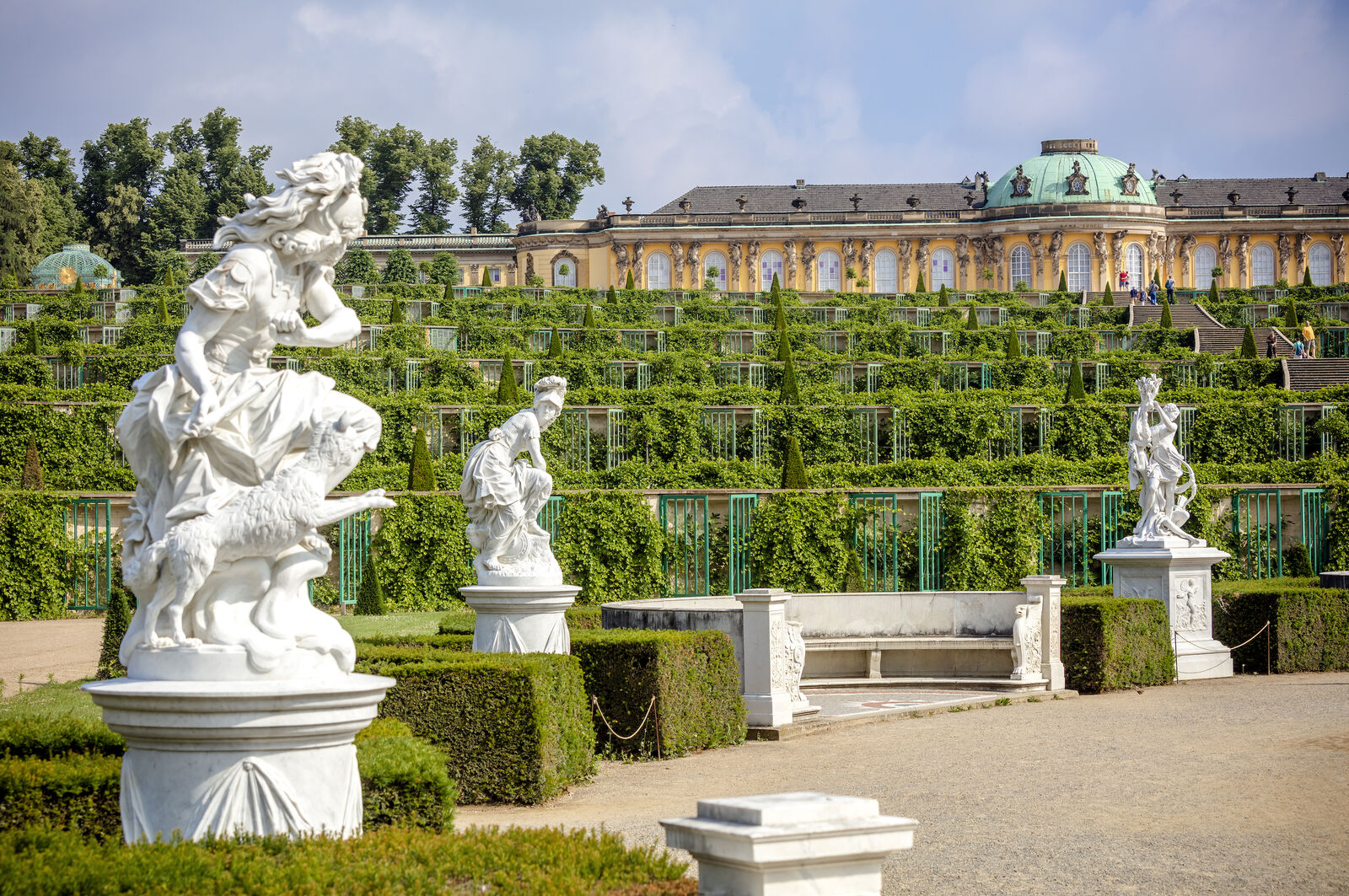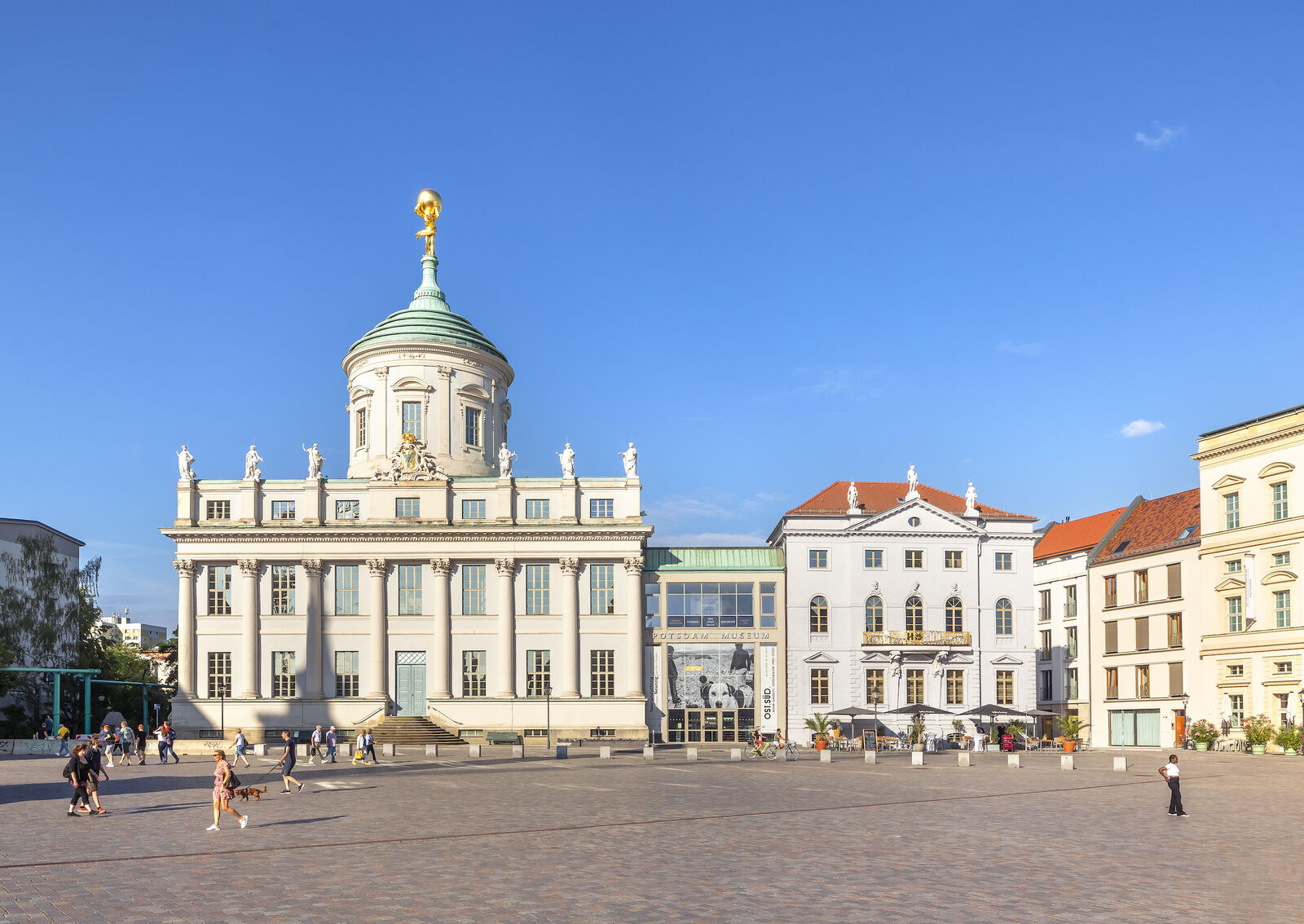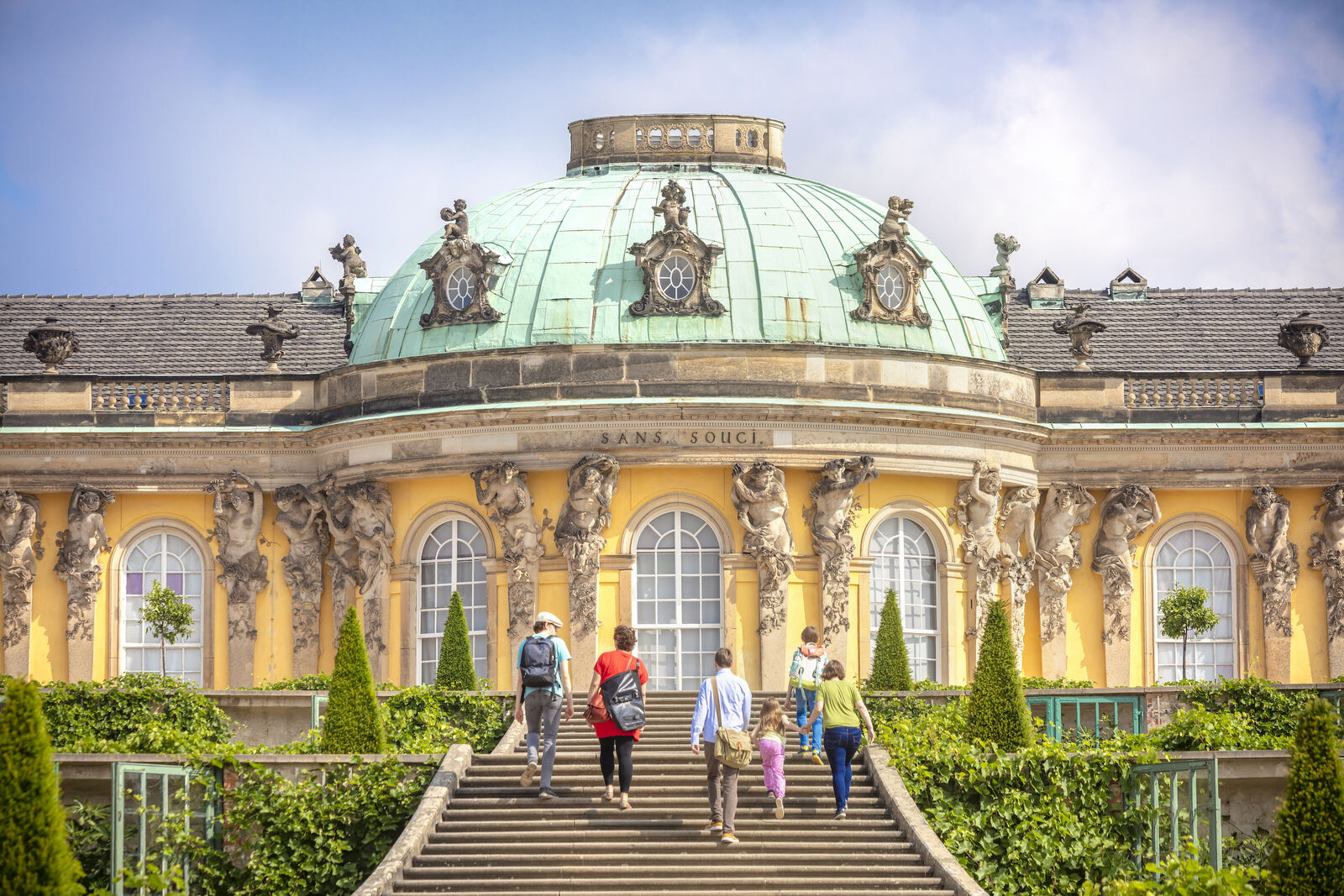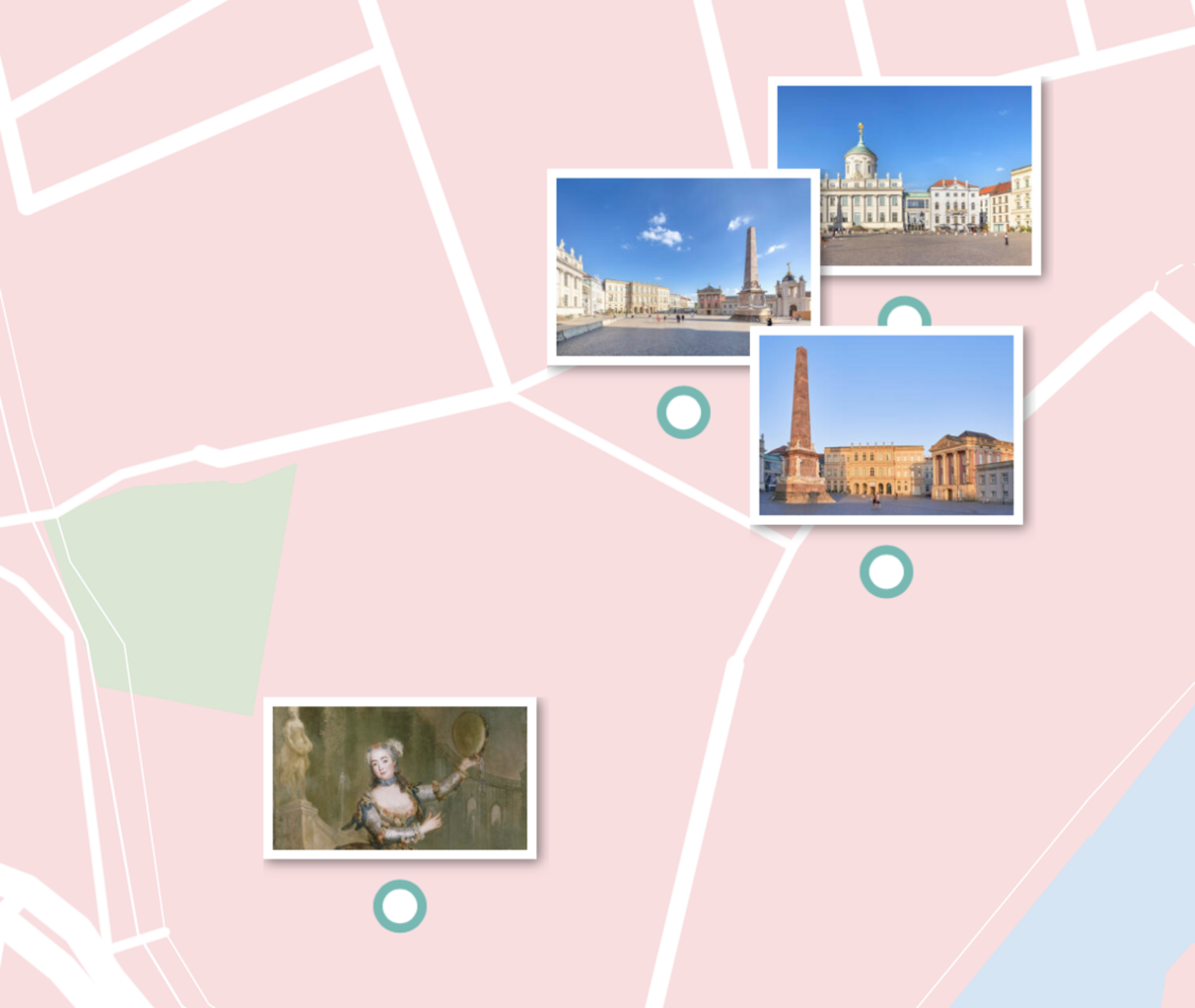
Antoine Pesne, Court Painter to Three Kings / Potsdam City Palace
The rhythmic sounds of the tambourine accompany the dancer’s graceful movements. Her small feet are delicately shod, and she wears a silver balloon skirt with embroidered flowers. She moves gracefully in front of a fabulous backdrop of park architecture. It is the dancer Barbarina, but despite the similar name she has nothing to do with the Museum Barberini. The lady was named Barbara Campanini, and she was one of the greatest ballet dancers of the 18th century. She performed in the theater of the City Palace in Potsdam. The painting that shows her was made by the most famous of all the French court painters, Antoine Pesne. Today, it is displayed in the Charlottenburg Palace in Berlin.
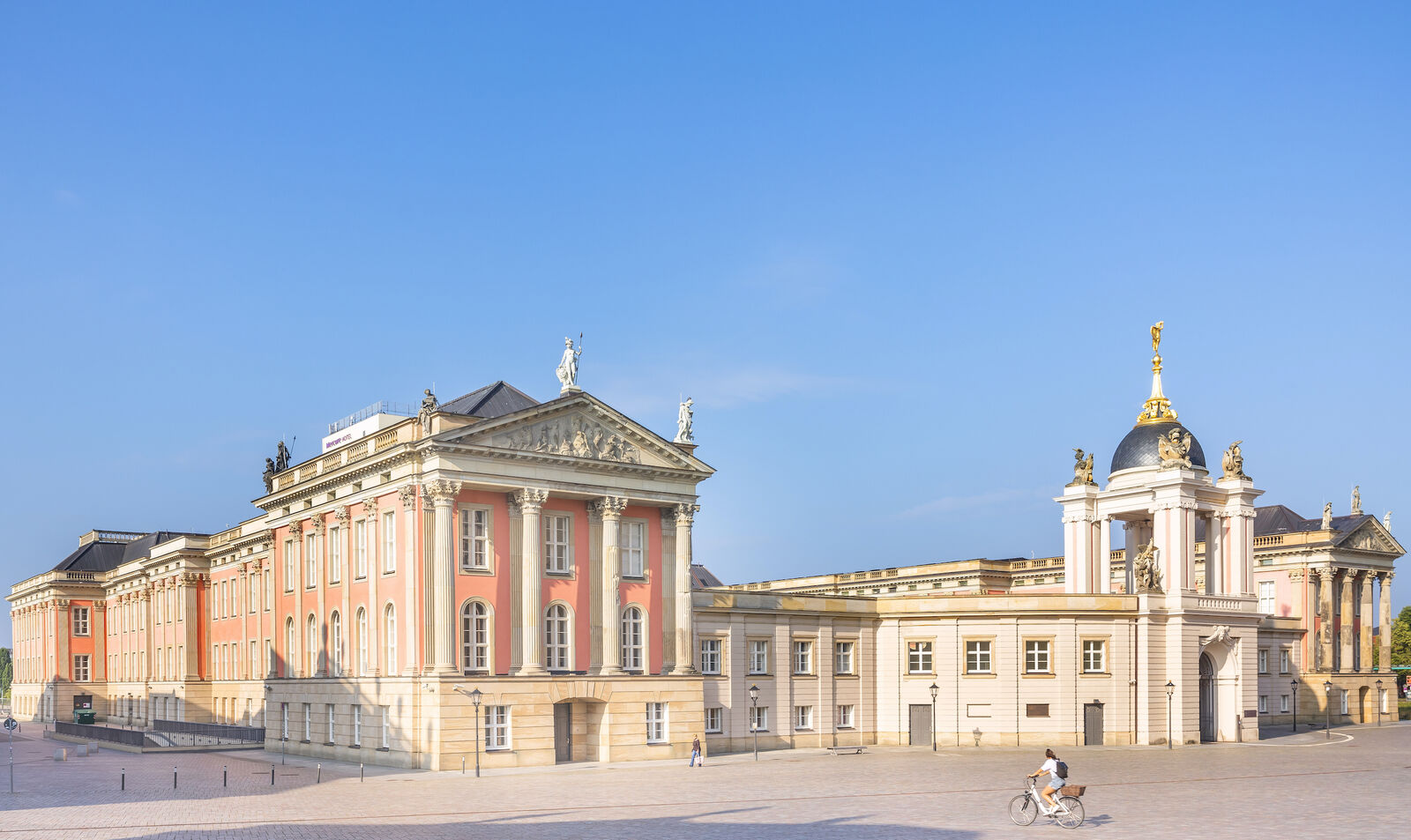
David von Becker
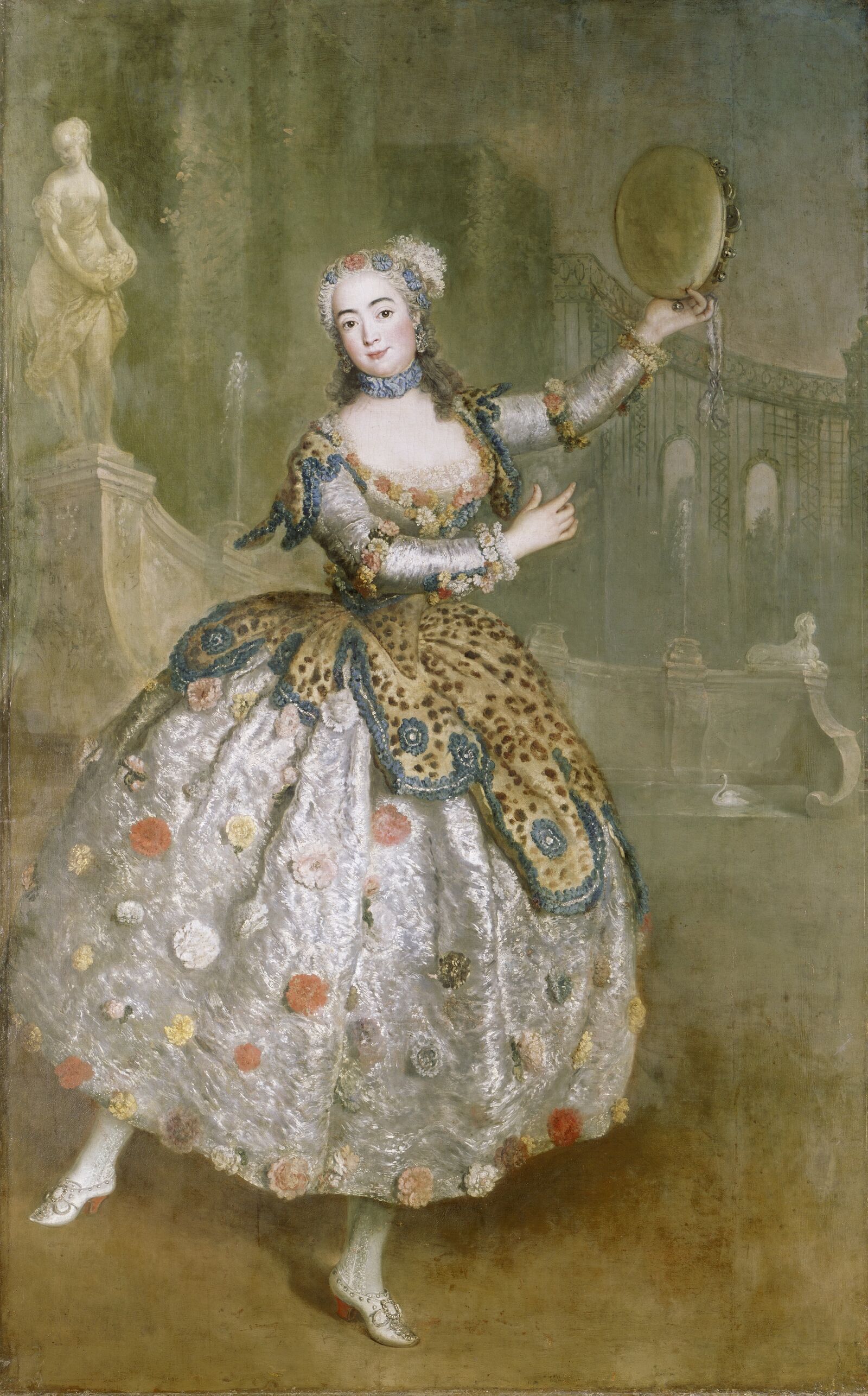
SPSG, Photo Jörg P. Andres
Antoine Pesne: Barbara Campanini, called Barbarina, married Cocceji (1721-1799) as baccante, 1745
Kings, dancers, actresses
Antoine Pesne was a religious refugee who came from a respected Parisian family of painters. He was called to Berlin by the Prussian king Frederick I in 1710 and became the royal court painter the following year. He continued to hold this office even when Frederick William I came to the throne in 1713—although the frugal “Soldier King” did reduce Pesne’s salary by half.
From 1736 to 1740, Antoine Pesne lived at the court of the crown prince Frederick in Rheinsberg. Frederick, a cultural Francophile, was an enthusiastic collector of pictures by the French painter Antoine Watteau. Frederick supported the Frenchman Pesne in the hopes that he would paint him pictures in the style of Watteau. Pesne painted numerous portraits in Rheinsberg, as well as ceiling frescoes with allegorical and mythological themes. It was also there that he began his productive friendship with the renowned architect Georg Wenzeslaus von Knobelsdorff. Together, they worked on the design of the palaces of Rheinsberg, Charlottenburg, Sanssouci, and the City Palace in Potsdam during the 1740s.
The painter Pesne was one of the most important artists of the Frederician Rococo, and, along with Antoine Watteau, numbered among the most significant proponents of the French Rococo style. Pesne achieved lasting recognition above all through two bodies of work: on the one hand, his numerous portraits of the Prussian royal family and members of their court, and on the other his images of female dancers, actresses, and “simple maidens” from the common people. When the City Palace was destroyed, the works by Pesne present there were lost or moved to other palaces.
The Potsdam City Palace is one of the stops on the audio tour France in Potsdam, which was developed for the Barberini App on the occasion of the French Impressionists moving into the Barberini Museum. The audio tour invites you to discover around 25 stops with French influences that have helped shape Potsdam over the centuries. Simply download the free Barberini App and be surprised by the city's many French references.
